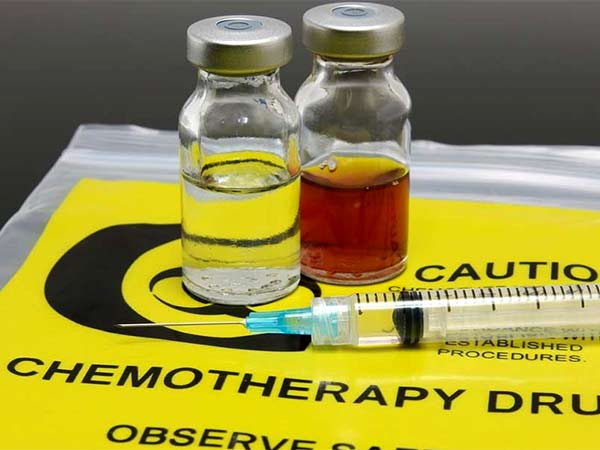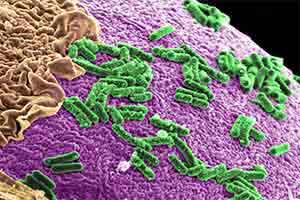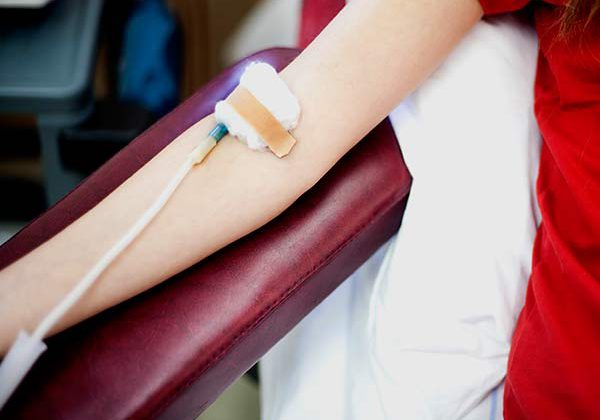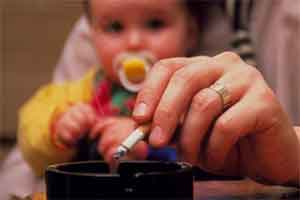Beta Blocker Shows Mixed Results in Protecting Against Chemo-Induced Heart Damage
After six months of follow up, women newly diagnosed with breast cancer who were given the beta blocker carvedilol to prevent heart issues while undergoing chemotherapy showed no difference in declines in heart function compared with those taking a placebo. Patients who took carvedilol, however, were significantly less likely to have an elevated marker in the blood that signals injury to the heart, according to a study being presented at the American College of Cardiology’s 67th Annual Scientific Session.\
 The study enrolled 200 patients diagnosed with breast cancer who had normal left ventricular ejection fraction and who, as part of their cancer treatment, were scheduled to receive anthracycline (ANT). Patients were randomly assigned to receive either carvedilol (median daily dose of 18.4 mg/day) or placebo when starting ANT chemotherapy (240 mg/m2) until completing it. ANT is a type of chemotherapy that at certain cumulative doses has been shown to cause heart damage by weakening the heart muscle. Carvedilol works by slowing the heart rate, opening blood vessels and improving blood flow, which also lowers blood pressure.
The study enrolled 200 patients diagnosed with breast cancer who had normal left ventricular ejection fraction and who, as part of their cancer treatment, were scheduled to receive anthracycline (ANT). Patients were randomly assigned to receive either carvedilol (median daily dose of 18.4 mg/day) or placebo when starting ANT chemotherapy (240 mg/m2) until completing it. ANT is a type of chemotherapy that at certain cumulative doses has been shown to cause heart damage by weakening the heart muscle. Carvedilol works by slowing the heart rate, opening blood vessels and improving blood flow, which also lowers blood pressure.
“This is the largest randomized clinical trial of a beta blocker to prevent the toxic effects of contemporary doses of anthracycline [ANT] on the heart,” said Mônica Samuel Avila, MD, assistant doctor in the Heart Failure and Heart Transplant Department in Heart Institute, Clinical Hospital of Medical School of São Paulo, and the study’s lead author. “This is only short-term follow up, but we found that carvedilol seems to prevent myocardial injury, but it did not have an impact on left ventricular ejection fraction.”
Avila also said the study findings further reinforce the need for cardiologists and oncologists to work together to define the best treatment strategies for individual cancer patients that minimize other negative effects, especially to the heart.
Neither the patients nor those administering the treatment knew which patients received carvedilol versus the placebo. Researchers assessed cardiotoxicity by measuring heart function with periodic echocardiograms and blood tests to check for a protein called high-sensitivity troponin T, which is released into the bloodstream when injury to the heart occurs. These measures were tracked at baseline and after each cycle of ANT chemotherapy (three, six, nine and 12 weeks) and after the end of all chemotherapy (around 24 weeks). Patients in the carvedilol and placebo groups were an average of 51 and 53 years of age, respectively. All had finished chemotherapy treatment.
For the study’s primary endpoint, prevention of greater than a 10 percent reduction in left ventricular ejection fraction at six months, researchers found no significant difference between the carvedilol and placebo groups, 14.5 vs. 13.5 percent, respectively. Ejection fraction is a measure of how much blood is pumped out of the heart with each contraction; anything over 55 percent is considered normal. Overall, declines in ejection fraction were minimal in both groups and were not statistically significant (from baseline to 24 weeks the average drop in ejection fraction was 65.2 to 63.9 percent in the placebo group and 64.8 to 63.9 percent in the carvedilol group).
Secondary outcomes included carvedilol’s effects on two biomarkers, troponin I and B-type natriuretic peptide (BNP), and diastolic dysfunction. Of the 65 (33.8 percent) patients with higher plasma levels of troponin I that are known to be suggestive of heart damage, many more were in the placebo group—41.6 percent vs. 26 percent. There was no difference in levels of BNP, a hormone produced by the heart that goes up when heart failure develops or gets worse. While not significant, patients in the placebo group tended to have enlarged hearts, compared to patients in the carvedilol group. Avila said this could indicate that carvedilol may help prevent remodeling or changes in the structure of the heart.
According to Avila, the reason why patients taking carvedilol had lower troponin levels, but no differences in changes in ejection fraction, is difficult to explain. She noted that the six-month follow-up may not have been sufficient to see changes in heart function. In addition, any heart damage may not have been severe enough to lead to heart failure. There was only one case of overt heart failure with reduced ejection fraction, which was in the placebo group.
“Previous studies have shown that higher troponin levels can predict cardiovascular events and so we could imagine that carvedilol may be able to prevent these events, but we did not see this finding in our study,” she said, adding that she and her team will continue to follow these patients and report data at one and two years.
In the meantime, researchers did find the prevalence of cardiotoxicity in this study to be lower than in previously reported data from other studies—a finding that could be attributed to lower doses of anthracyclines and lower overall cardiovascular risk in the study population. It could be that the beneficial effect of carvedilol might be more pronounced among higher risk patients, Avila said. In recent years, lower doses of anthracyclines are used to help reduce the risk of heart damage from treatment.
Source: American College of Cardiology
Full bibliographic information:
Carvedilol for Prevention of Chemotherapy Related Cardiotoxicity
Journal of the American College of Cardiology




